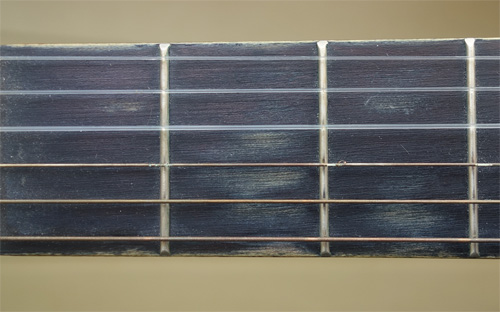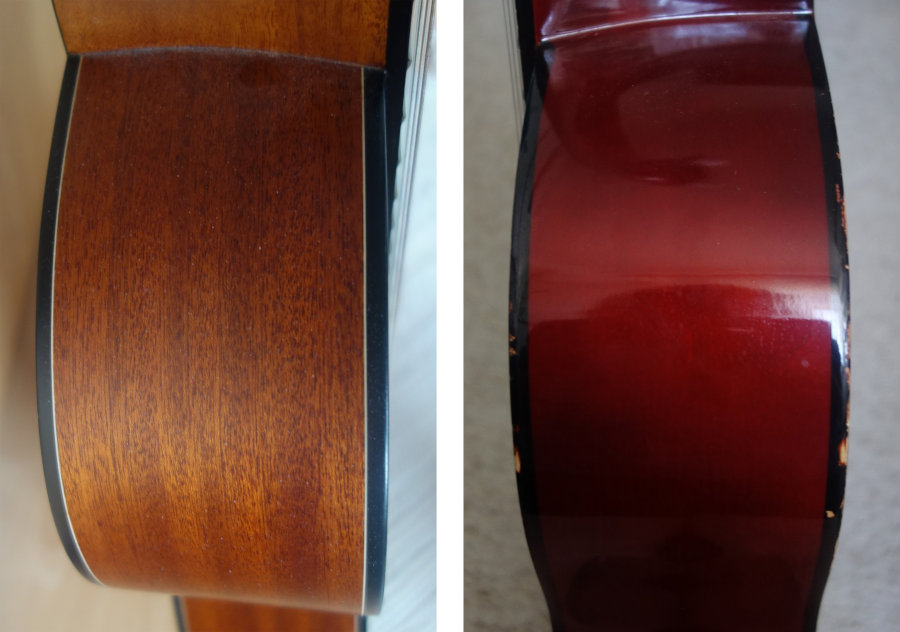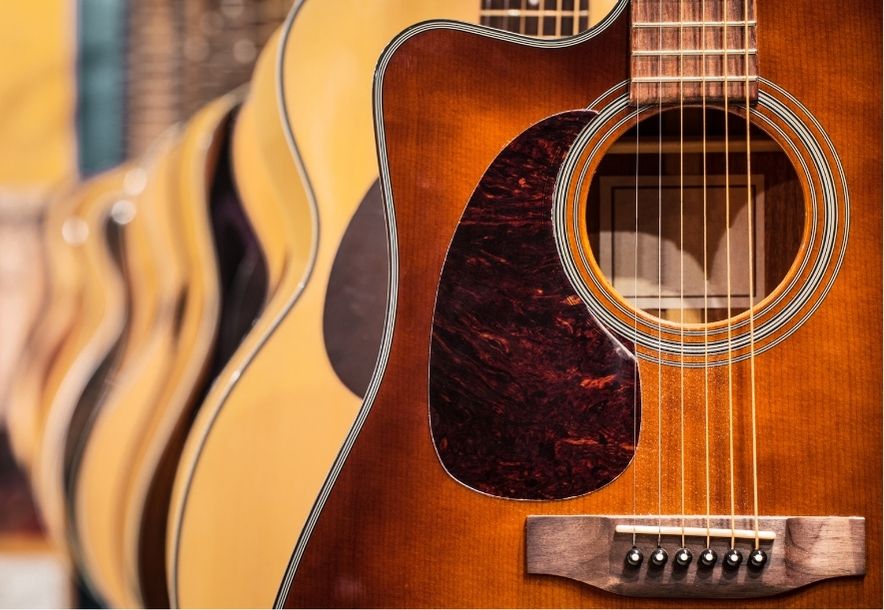
If you are not a guitarist, you are probably wondering how to choose the right guitar among the various models and offers available. When buying a kid’s guitar there are basically 3 things to consider:
– Guitar Size
– Guitar Type
– Guitar Quality
In this article, I would like to give you some advice that you should consider before buying a children’s guitar, as well as where to buy them for the best price.
Guitar Size
Size is an important consideration when buying a guitar for children. (It wouldn’t be a good idea at all to just buy your son or daughter a regular-sized guitar). It is important that the guitar is not too big for your child. Otherwise, it will be impossible or at least very uncomfortable to play. On the other hand, you don’t want to buy a guitar that your child will outgrow in a few months. To help you choose the right size, we’ve included a guitar size chart. For example, for a 5 year old child who is 3’9″ tall, you should buy a 1/4 size guitar.
Guitar Type
You should also keep in mind that guitar size is only one part of making it easy for your child to play. In fact, it’s possible to start on any type of guitar, but a nylon-string classical guitar is certainly the best choice for children. The strings are relatively soft compared to the steel strings found on steel-string acoustic guitars. The tension of these strings tends to be quite low, which is also helpful for children’s fingers. That’s why the classical guitar is the most sold type of guitar for children. There is a wide range of different models on the market. Parents are concerned with getting value for money, especially if the child has only recently taken an interest in the guitar. A reasonable beginner’s nylon guitar can be purchased for as little as $100.
It’s likely that your child will ask you for an electric guitar right away. Often, electric guitars are not recommended as a first choice for children. However, they do have some advantages, such as a slimmer neck and fairly low string tension. But keep in mind that they also use steel strings, which are often too hard for children. Depending on your child’s motivation and dedication, it may be better to buy a nylon guitar first and then let them prove that they’re ready for an electric guitar after a few months of practice. In addition to the guitar itself, an electric guitar requires an amplifier and cables, and many stores offer packages. You’ll find much more information on each type of guitar in a separate article.
Guitar quality
A good musical instrument has a price. The same principle applies to guitars for kids. Of course, it doesn’t make much sense to get the best or most expensive guitar at first, because your child will outgrow it anyway.
For around $100, you can get pretty good guitars for kids. But you shouldn’t spend less than $70, and here’s why: below that price, the quality varies greatly from guitar to guitar. So it can happen that you’re lucky and get a cheap guitar with acceptable quality. However, you may also get a crappy guitar, and since you’re not a guitarist, you won’t notice it. Cheap guitars are made of cheaper materials than more expensive ones. They use plywood bodies. More expensive guitars are made of solid woods like mahogany and rosewood. Cheaper guitars also have cheaper paints, finishes, hardware, and so on. Typically, a cheap guitar doesn’t stay in tune nearly as well as a higher-end instrument. A cheap, poorly made guitar is no fun to play. And if a guitar is no fun to play, chances are it will end up gathering dust in a corner somewhere. In the following, I would like to give you some simple advice on how to judge the quality of a guitar.
Wood
The most important material in the construction of a guitar is wood. In the product description, you’ll always find information about whether the guitar is made of laminated wood or solid wood. Secondly, the type of wood should also be specified. If the wood type isn’t specified, it’s a sign of a low-quality guitar. Parents and beginners may wonder whether it’s better to have a rosewood or mahogany top, for example. What is the difference? There is a difference in tone. But as a beginner, your ears won’t really hear a big difference. So don’t spend too much time on it. If there are woods mentioned for the different parts, take it as a good sign. Since the top of a guitar produces the sounds, it’s the most important piece of wood on a guitar. If you want a quality guitar, the top should be made of solid wood.
Varnish
Besides the wood used for the top, the finish also has a strong influence on the sound. The finish is a perfect indicator of a guitar’s quality, and it’s especially easy for a beginner to tell the difference between a bad finish and a good one.
A simple rule applies: the thinner the better. Cheap children’s guitars always have a thick varnish (see picture for the difference). Another thing you can do is smell the sound hole of the guitar. A good guitar has a smell of wood, while a cheap guitar has a chemical smell. And I think an instrument that smells a lot like chemicals can’t be too good for a child.
Stays in tune
It’s important to get a beginner’s guitar that is reasonably well made, plays well, and stays in tune. If a guitar isn’t made well enough, no matter how well you tune it, it may not sound in tune, and it’s important for your child to hear what they play in tune. A good guitar will usually stay in tune for a long time (how long depends on the temperature of the environment). In contrast, many low-quality guitars won’t stay in tune for more than an hour.
Where to buy kid’s guitars?
It’s usually best to go to a music store to buy one. Only in a store can you try out all the instruments. With children’s guitars, however, it’s a little different. On the one hand, most stores don’t have a large selection of children’s guitars. On the other hand, a child can’t really tell you what kind of guitar they prefer. The most important thing is that you have the option to return the instrument if your son or daughter loses the motivation and dedication to learn the guitar just after a few days. And for musical instruments, you certainly have that option at online stores. That’s why I recommend you to buy the instruments for example at Amazon, which also has a bright range of classical children’s guitars. I don’t recommend buying a guitar in a supermarket because most of them are made of cheap materials. Remember: Buying a guitar is an investment in your child’s musical future.
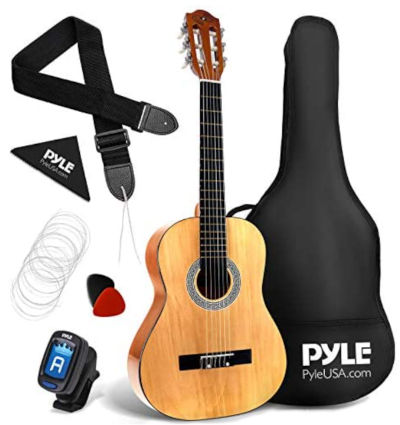
– quality is alright
– very good value for money
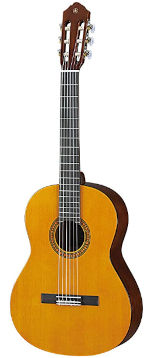
– good quality and sound
– good value for money
